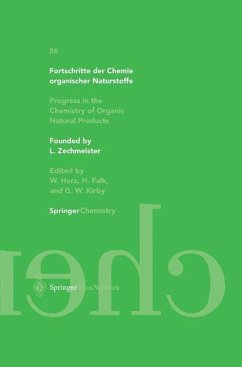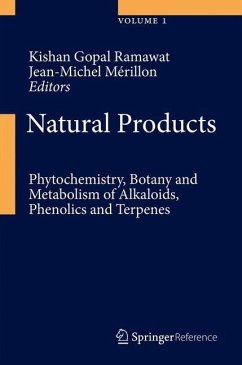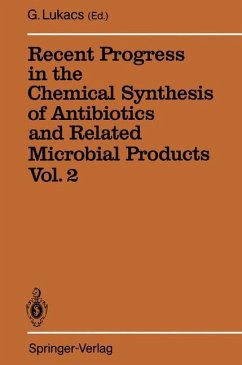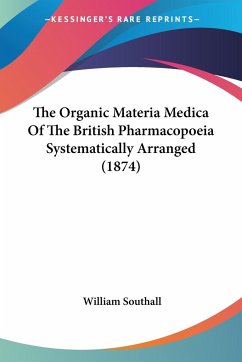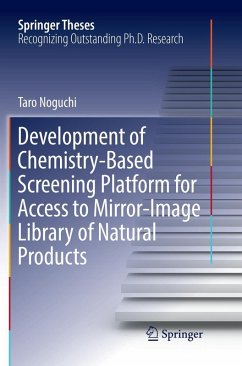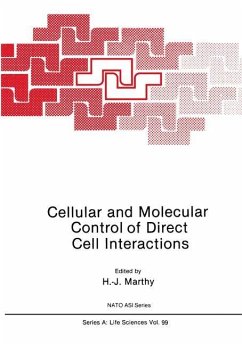
Progress in the Chemistry of Organic Natural Products / Fortschritte der Chemie organischer Naturstoffe

PAYBACK Punkte
38 °P sammeln!
Of the porphyrinoid structures occurring in nature the most important and most widespread are the red blood pigment heme (1), the green pigment of plant photosynthesis chlorophyll a (2), the bacterial photo synthetic pigment bacteriochlorophyll a (3), and the "antipernicious" red pigment vitamin BJ2 (4). The basic function of these cofactors are determined by the incorporation of the different metal ions into the macrotetracycles. The different oxidation levels of the macrocyclic ligand system regulate the fine tuning of these functions. The final adaptation of the cofactors to their special m...
Of the porphyrinoid structures occurring in nature the most important and most widespread are the red blood pigment heme (1), the green pigment of plant photosynthesis chlorophyll a (2), the bacterial photo synthetic pigment bacteriochlorophyll a (3), and the "antipernicious" red pigment vitamin BJ2 (4). The basic function of these cofactors are determined by the incorporation of the different metal ions into the macrotetracycles. The different oxidation levels of the macrocyclic ligand system regulate the fine tuning of these functions. The final adaptation of the cofactors to their special molecular environments in the cell compartments is effected by variation of the substitution patterns of the chromophores. HCO,C 3 CO,Phytyl 2 Heme Chlorophyll a CONH, CONH, ~ H,NOC 1 , CONH, /I(Y N~ 3 4 Bacteriochlorophyll a Vitamin B" HO References, pp. 42-51 Naturally Occurring Cyclic Tetrapyrroles 3 Until the mid-1970s the four classic cyclic tetrapyrrolic structures with their porphyrin,chi orin, bacteriochlorin, and corrin skeletons were almost the only representatives in the class of porphyrinoid natural products (1-10). Although other partially reduced porphyrins were conceivable, none of these partially saturated porphyrinoid structures had hitherto been found in nature.





